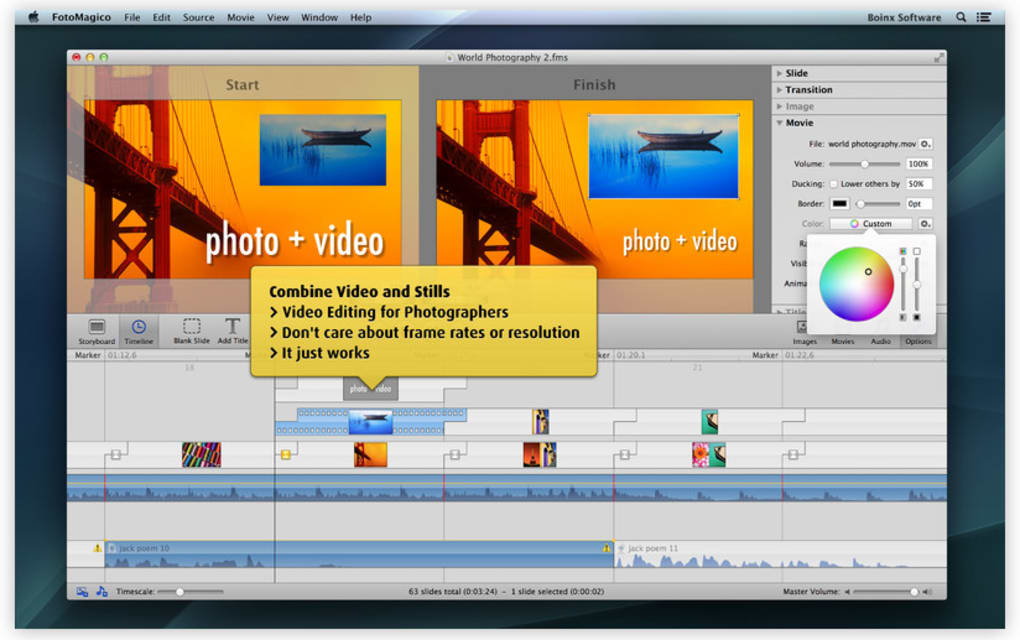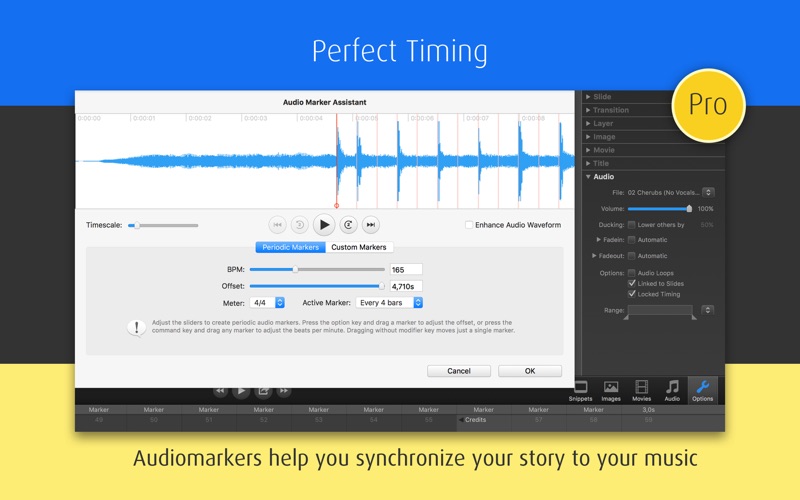

But: To come up with the best quality available (which is about as good as it gets on a TV) you must have time. Therefore, for a quality fanatic like me, the choice was easy: Real time presentation was a must, and FotoMagico delivers stellar quality.Įxport options: If you want (or must) create a video, you can set almost every parameter you want (frame rate, bit rate, resolution, encoder used etc.) in FotoMagico Pro (but not in the standard version).Īll exports rely on Apple's Quicktime rendering engine (part of BluRay and HD-DVD specifications) - if Apple upgrades Quicktime, Fotomagico will benefit, too. Motions (Ken Burns, zoom transitions etc) are choppy on all these formats, but they are not when presenting directly from Fotomagico.
#FOTOMAGICO EXPRESS MOVIE#
All movie formats associated with discs (Video-CD, DVD, HD-DVD, BluRay) have lower frame rates: 24 fps for the HD formats, and 25 or 30 fps for DVD/Video CD, for PAL and NTSC respectively. These will always be inferior in quality due to the compression algorithms used (even a full-HD movie created using the latest H.264 encoder shows significantly less detail than the real-time rendering in Fotomagico). Photo-to-Movie seems to prepare DVDs or other movies from your shows.

Present on a 30" Apple Cinema Display (which has 4 Megapixel resolution) - and you would want to buy one right away, it's awesome.
#FOTOMAGICO EXPRESS FULL#
This gives you superb playback quality as everything is rendered in real-time to make it fit the resolution of your screen.įor a good full-HD monitor, this would mean, 1920x1080 pixel images, progressive scan, at 60 full frames per second.

Store your projects in your iCloud Drive to keep them synced across multiple devices. For the first time, you can freely work and play your slideshows on your favorite device, whenever, wherever you like it. The primary way to watch slideshows in Fotomagico is the live presentation using either the Fotomagico software or a (Mac only, Windows forthcoming) standalone Fotomagico player generated from the show. FotoMagico 6 unites computer and handheld-based workflows into one because it runs on Macs and on iPads.
#FOTOMAGICO EXPRESS HOW TO#
In addition, I demonstrate using a NAS or Network Attached Storage device (in my case a Synology NAS) as an expandable Time Machine Backup.Īnother requirement is to sometimes backup or sync files across two Macs or more, and I demonstrate setting this up using ChronoSync and ChronoAgent on your Mac.įinally, I take a look at the recent changes to iCloud Drive with Desktop and Documents sync and assess how these changes impact on your backup strategy, as well as demonstrating how to restore deleted files and folders from iCloud Drive within the 30 day limit.I have been using Fotomagico Pro v.2 for the past few months - and I just read a bit about Photo-to-movie, but here is what I think are the main differences:

In this episode, I take you through the principles of creating a local bootable backup to a USB drive, as well as setting up a Time Machine backup to the same USB drive. With the introduction of iCloud Drive Desktop and Documents sync in macOS Sierra, I felt it was time to revisit the how, what and where of backups.Įven with the prevalence of online backups and services, local backups are still advisable including bootable backups if you want to get back working in a hurry.


 0 kommentar(er)
0 kommentar(er)
